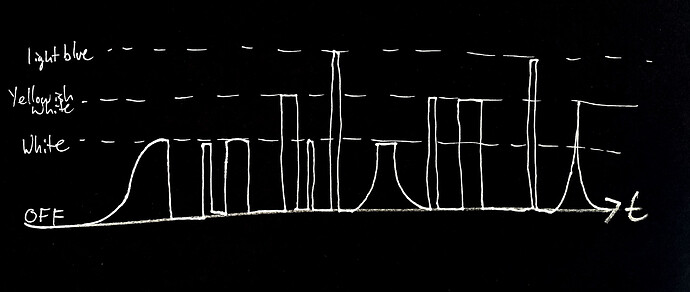Thanks for sharing the pics! I love watching people’s projects make progress.
I’ve done a bit of work on twinkles. Here’s a few to get you started:
Twinkler on the Randomly reduced code golf
Twinkling Classic Xmas Strands.epe (13.7 KB)
Custom Sequences.epe (13.9 KB)
If you’re not that deep on PB code, it might be a little hard to pull out the right parts to adapt. From your description I couldn’t tell if you want some darkness in there too. Can you draw a diagram of what a great twinkle would like over time? For example:
What percentage of the time is each LED likely to be in each state: Off, white, warm white, light blue? And are you looking for slow, perceptible fades, or flashy sudden twinkles?
